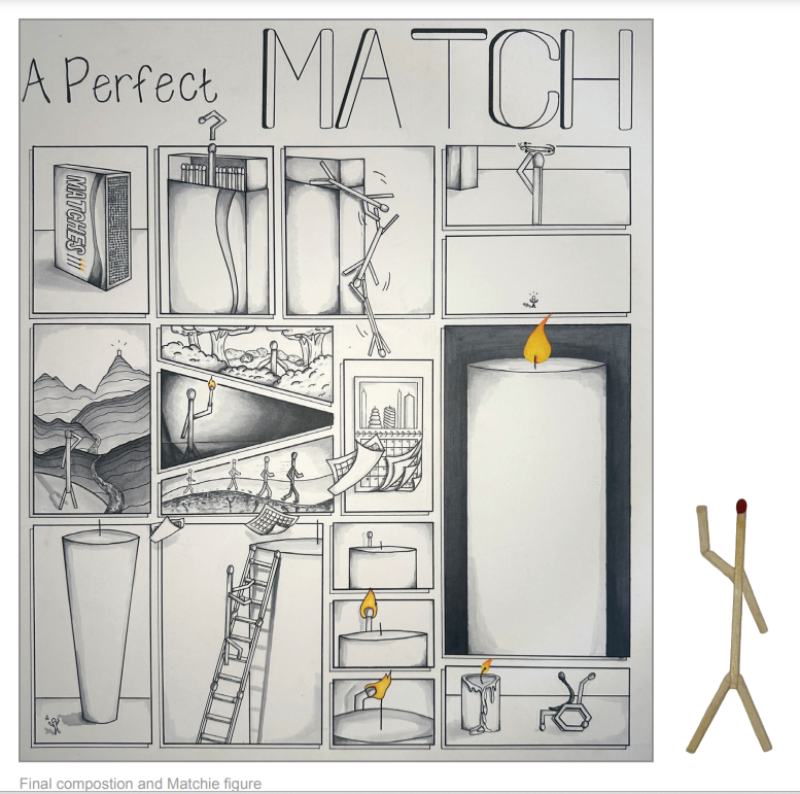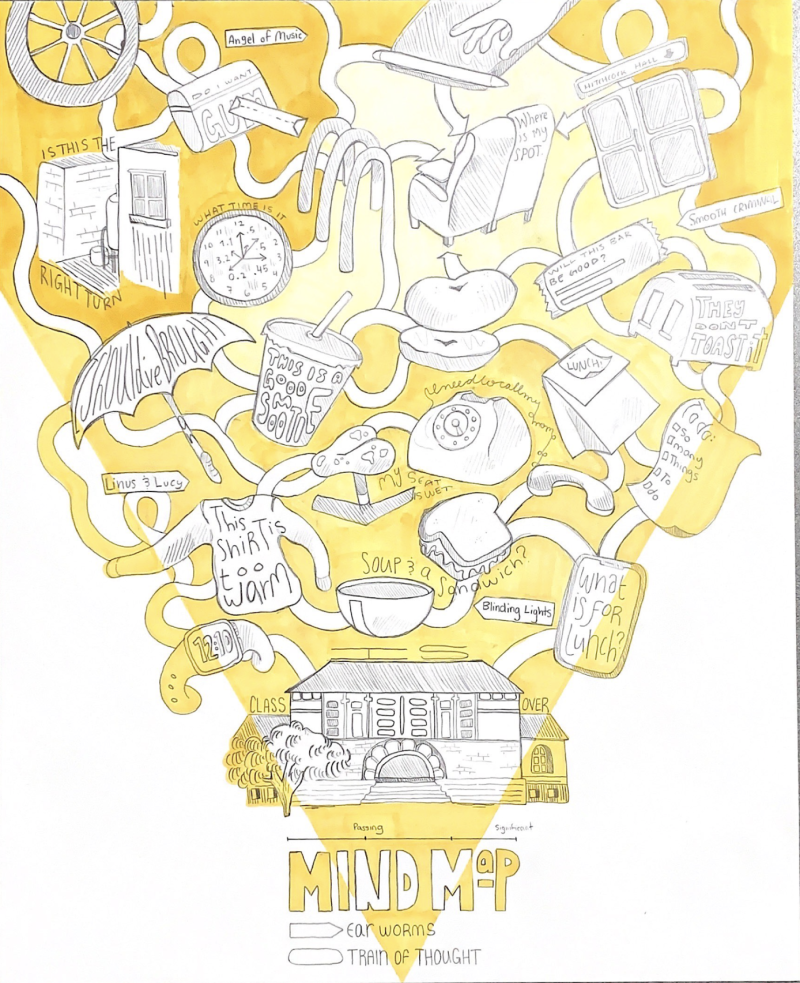DESIGN 2310: Visual Principles and Techniques I
Concur: 2110.
Prerequisite: Selection to Design Foundations.
Concur: DESIGN 2110.
Keywords: Design process, Graphic communication, Drawing
Overview
Visualization Principles is an introduction to strategies to support drawing as a skill used to communicate characteristics of a subject and space as it pertains to Design. Skill building emphasizes drawing as a tool to observe, record, analyze, and communicate information about natural and human-made objects, spaces, experiences, and interactions.
Objectives
- Demonstrate visualization applications as functional methods of thinking by helping us to observe, interpret, represent, and imagine information
- Identify visible and invisible qualities in all things observed and demonstrate strategies that inform our decisions while creating representations and interpretations of thought and observations
- Understand that all complex forms derive from essential shapes
- Understand that our representations of the world occur on a spectrum of abstraction, in which decisions depend on our perception/intention
- Apply active observation to leverage visible and invisible details in the drawing process
- Analyze and represent 2D and 3D complex forms by extrapolating them from essential shapes
- Apply types of perspective to construct space/form
- Interpret observations to translate into representations
- Develop strategies and differentiate between creative processes as both interpretive and following conventional practice
- Understand that technical skills develop through consistent and meaningful practice and participation
- Understand that experimentation and indeterminate creative processes can function as a method of ideation by uncovering concepts and decisions that may be difficult to conceive or notice
- Apply an iterative process to test and revise work
- Apply rapid prototyping to represent ideas visually
- Evaluate advantages and proper use of digital tools
- Analyze your work through documented reflection on decisions, ideas, and the process of creating
- Analyze peers’ creative work through critique
Course Materials
Students use a variety of materials and technologies in this course. Foundation studies require the purchase of a Design Kit. Kit contents are updated each year, and the new list will be available to you before the start of classes in August. You may purchase the kit on campus during the first week of classes. The current kit cost is approximately $100.
We also recommend a personal computer. We use a variety of Adobe Suite applications including InDesign, Illustrator, Photoshop, and more.
Course Organization
This is a 3 credit hour studio course that meets twice a week for 2hr40min each day.
Visual Principles meets in-person (but may also consist of some online activities). In-person activities include discussions, demonstrations, presentations, exercises, project development, and critiques. Asynchronous material and activities include assignments and exercise development.
Sample Coursework
- Attendance may be taken at any point during the class period
- Active participation needed during class
- Reading assignments, exercises, and viewing media for occasional online meetings when necessary


